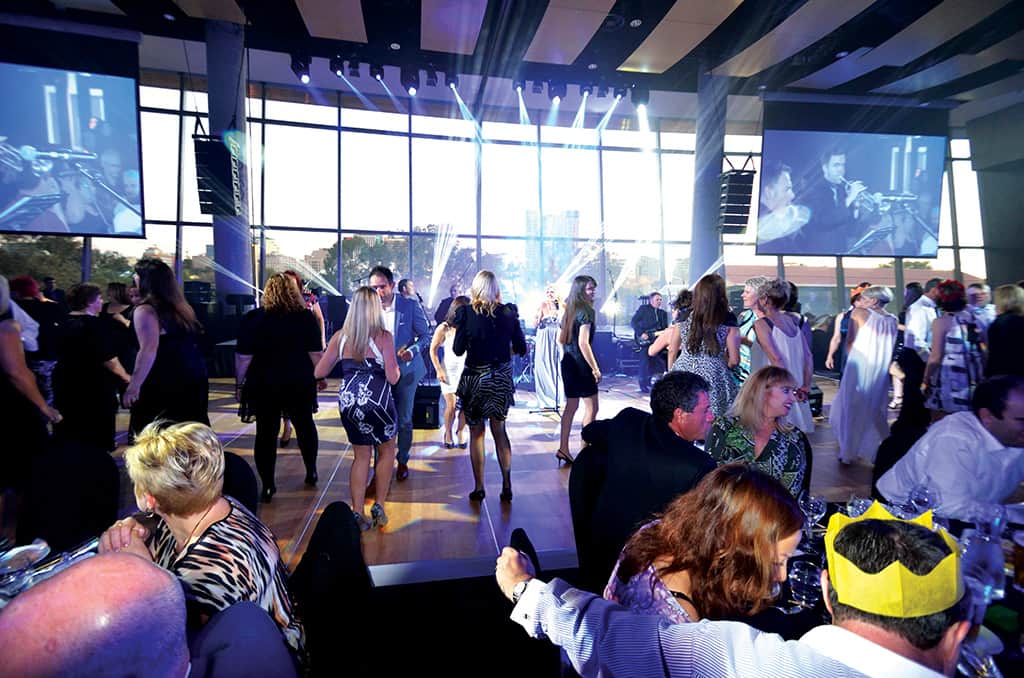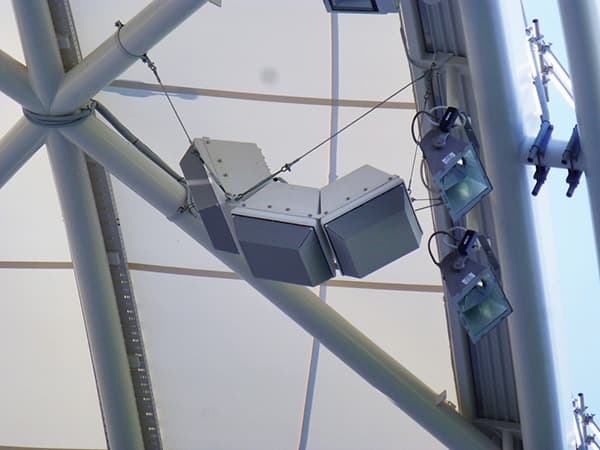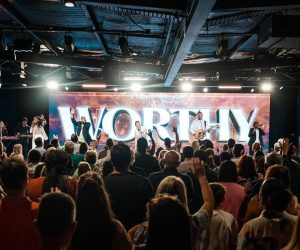
An Oval Reborn
Adelaide Oval’s $500m rebirth.
Text:/ Derek Powell
For more than 140 years the Adelaide Oval has witnessed some of the greatest moments in sport and entertainment. From Bradman and the infamous bodyline series in 1932 to David Bowie’s first-ever stadium concert in the 1970s to the Rugby World Cup; this particular hallowed turf has been the very beating heart of sporting and cultural life in South Australia. Now, thanks to a half billion dollar redevelopment, the ground is set to push on through the next century as Adelaide’s premier venue for AFL, Rugby League, Union, Cricket, concert events and much more.
In engineering terms, the core of the project has been the construction of two massive new stands. The Southern and Eastern stands have not only boosted the seating capacity to more than 53,000, but also include more than 20 indoor function spaces, the largest of which can cater for up to 1500 people. Everything about the redevelopment has been immense, and the audiovisual statistics are no exception. Included in the redevelopment is a new sound system, three enormous scoreboards, re-vamped architectural lighting and more than a thousand TV, signage and wayfinding monitors.
As covering the details of the all-new facilities would take up most of this issue, we’ll take a smorgasbord approach and just dip into a few select items here and there.
PA TO THE PEOPLE
The A$2.5m installation contract for the new sound system, which encompasses the bowl and the extended plaza, was won by The PA People. In an unusual move, given the amount of expertise available in Australia, the design was done off-shore by Texas-based consultants WJHW and was based around top-shelf EAW arrays with QSC amplification and digital signal distribution.
The PA People cut its teeth on major stadia back in 1999 when it designed and built the PA system for Stadium Australia using its own proprietary digital distribution gear and have won the majority of major arena work ever since, so it was a well-oiled machine that swung into action for a 10-month build at the Oval.
The remit included supply and installation of all main front of house clusters, fill speakers, gate speakers, amplifiers and processing. The impressive new arcs of the Southern, Eastern and Western stands roofs are home to 27 separate clusters of EAW QX500 loudspeakers between them, supplemented by over 230 JBL AWC82 100V line loudspeakers as infill around the ground.
In addition to the main PA and stands infill, a number of specialised loudspeakers have been installed in key positions. JBL CBT Series column speakers are installed in the outside of the South and East gates for crowd address. The North gate is covered with EAW UB12 series speakers.
The Northern end of the ground, which houses the historic wooden cricket scoreboard, created some varied mounting challenges as the system had to provide comprehensive coverage while maintaining an unobtrusive look. Brett Steele, Manager – Installed Systems at The P.A. People, noted that JBL AE Series loudspeakers ended up mounted on a light tower, under a camera deck, on the new LED screen and inside the heritage-listed scoreboard itself. “We had to get special permission to install that one,” explained Brett. “You can’t see it, which was our aim.”

“”
Everything about the redevelopment has been immense, and the audiovisual statistics are no exception

RING OF FIBRE
All of the audio, video and data elements that make a modern sporting event travel across a single, fully converged network, distributed via fibreoptic cable through Cisco enterprise switches. Installed as part of the base build contract, this infrastructure has enabled The P.A. People to distribute all audio via Dante and the Q-Sys Protocol.
Chris Dodds, The PA People’s managing director, commented that the converged network, rather than a dedicated structured cabling system, is the way of the future. “From an AV perspective,” he said, “if you’re using elegant protocols that abide by networking rules then there is absolutely no problem operating in an integrated environment, so long as the network is dimensioned and configured appropriately.”
A Yamaha CL5 digital mixer takes pride of place in the Southern Stand control room, linked to a combination Rio3224-D and Rio1608-D input/output boxes throughout the ground. “There are six Rios around the venue,” continued Brett, “including positions in the control room, in the basement for linking to the IPTV system, and in strategic places at ground level for pick-ups.”
Katherine Connelly, in-house audio mixer for production company Kojo, finds the flexibility of the Dante system perfect for game-day operations: “It definitely gives you more opportunities to patch and route around the stadium,” said Katherine. “For example, some days our host commentator won’t be in the same room as us, he’ll be on a different floor, so digital patching makes it much easier to get audio to and from him.”
HEART OF THE GAME
At the system’s heart is the Q-Sys Core 4000 open architecture DSP unit, handling all system processing and routing to QSC power amplifiers across seven amp rooms. All main signal distribution is via the Q-Sys protocol. “There are two amp rooms in each of the main stands, and one in the North,” Brett clarified. “And this is all running on the converged network along with the digital signage, video and IT.” Assisting The PA People with Q-Sys design and commissioning was Ewan McDonald, Q-Sys system sales specialist with Technical Audio Group.
Additional Q-Sys IO 22 breakout boxes are located in function spaces served by AV contractor Central AV, which we’ll learn more about in a moment. “We send them an audio feed of the bowl,” Brett expanded, “and a relay contact from the fire system that shuts their local PA systems down in case of emergency.” Other items integrated into the system include a Listen Technologies 150MHz hearing assistance system, four channels of Shure ULX-D radio microphones and Shure IEMs.
Phase one of the Adelaide Oval renovation project saw two-thirds of the system up and running for the Ashes last summer, with March 27 as completion date for the balance.

FANTASTIC FUNCTIONS
The completion of the new stands has not only accommodated some 20,000 extra spectator seats but also added premier function space equivalent to several five-star hotels. It has catapulted the Oval into a league of its own as a corporate venue, offering everything from ballrooms to boardrooms. The contract for in-house AV operations was fiercely contested and has been won, not entirely unexpectedly, by Adelaide’s own Central Audio Visual.
Glenn Spear, Central AV’s managing director, is no stranger to high-profile projects as we discovered when we checked out his new full HD outside broadcast van. However this project is something else again.
As part of its five-plus-year commitment, Central AV has wired up each of the 22 function rooms with permanent cabling infrastructure augmented by portable equipment to serve the varying daily requirements. The small- and medium-sized rooms are kitted out with a general purpose sound system utilising a ceiling speaker array (with a reported 280 drivers between all the rooms) and a series of local input plates connecting to projector positions via Wyrestorm extenders. To this, the on-site staff add lecterns, projection equipment, switchers, microphones and more from the extensive on-site equipment pool to match the exact needs of each function.
The flagship space is the William Magarey Room, a subdividable ballroom located on Level 3 of the new Southern (Riverbank) stand, that can accommodate up to 1400 guests in theatre-style seating. Extensive floor-to-ceiling glazing creates amazing city skyline views, but has also required special attention to video display. The ballrooms are provided with high-powered Barco projectors that sparkle for evening functions but even these are no match for the 6m-high windows during the day. But it has all been thought through, and these rooms have access to super-bright venue-owned LED screens for operation in full daylight. No ceiling speakers here, as audio is more than a match for the space with dedicated Meyer line arrays and Digico digital consoles catering for everything from speeches to live cabaret. A full range of lighting is also on tap with plenty of rigging points built in. Naturally should you want to go live-to-air, Glenn is only too happy to back the OB van up to the dock and plug right in to the action.
To keep the operation running, Central AV keeps two managers and four technicians gainfully employed at the Oval, with extra staff brought in as required to crew the larger functions.
LIGHTING UP THE NIGHT
Of course, sport remains the heart and soul of the Oval and the redevelopment included spectacular new architectural lighting on the Southern approach that wraps the stadium in team colours on game nights.
In response to a specification by Aurecon consultant Sarah Linton, ULA Group (in association with local dealer Deluxe Lighting Services) created a spectacular tiara of coloured effects lighting that washes the Southern stand. The LED fixtures create an infinitely-controllable panorama of light, adding an extra burst of atmosphere as fans approach from the CBD.
The wash is created by an array of 30 Griven Emerald S10s, each packing 60 high-power RGBW LEDs, but the real star is the control system. The Chamsys Magic Q control software takes command of the fittings across a DMX network and can trigger preset scenes for each team’s colours to rev up crowds as they troop across the new A$40m pedestrian bridge. But wait, there’s more! Special effects scenes can be created that pulse the appropriate club hues when goals are scored, keeping viewers as far away as the city informed of progress as the game unfolds. All this interfaces to the Adelaide Oval’s Clipsal C-Bus system which controls the rest of the stadium lighting, giving the Oval staff just a single interface for both practical and effects lighting.
It’s great fun that also keeps a lid on expenses with the LEDs running cool at less than 200 Watts per fixture – champagne effects on a beer (electricity) budget.
There’s plenty more on site, including an IPTV system connecting all areas and those three LED scoreboards, but alas the bar is closing, so those stories will have to wait for another day.


MORE INFORMATION
The PA People: www.papeople.com.au
Eastern Acoustic Works: eaw.com
JBL: www.jblpro.com/www/home
QSC: www.qsc.com/solutions/installed-sound
Central AV: www.centralaudiovisual.com.au
ULA Group: www.ulagroup.com
Chamsys: secure.chamsys.co.uk















RESPONSES